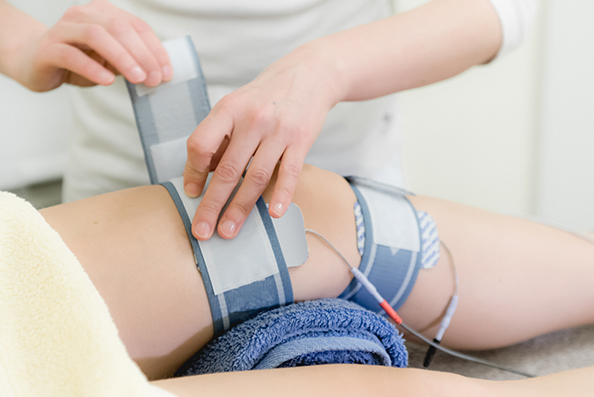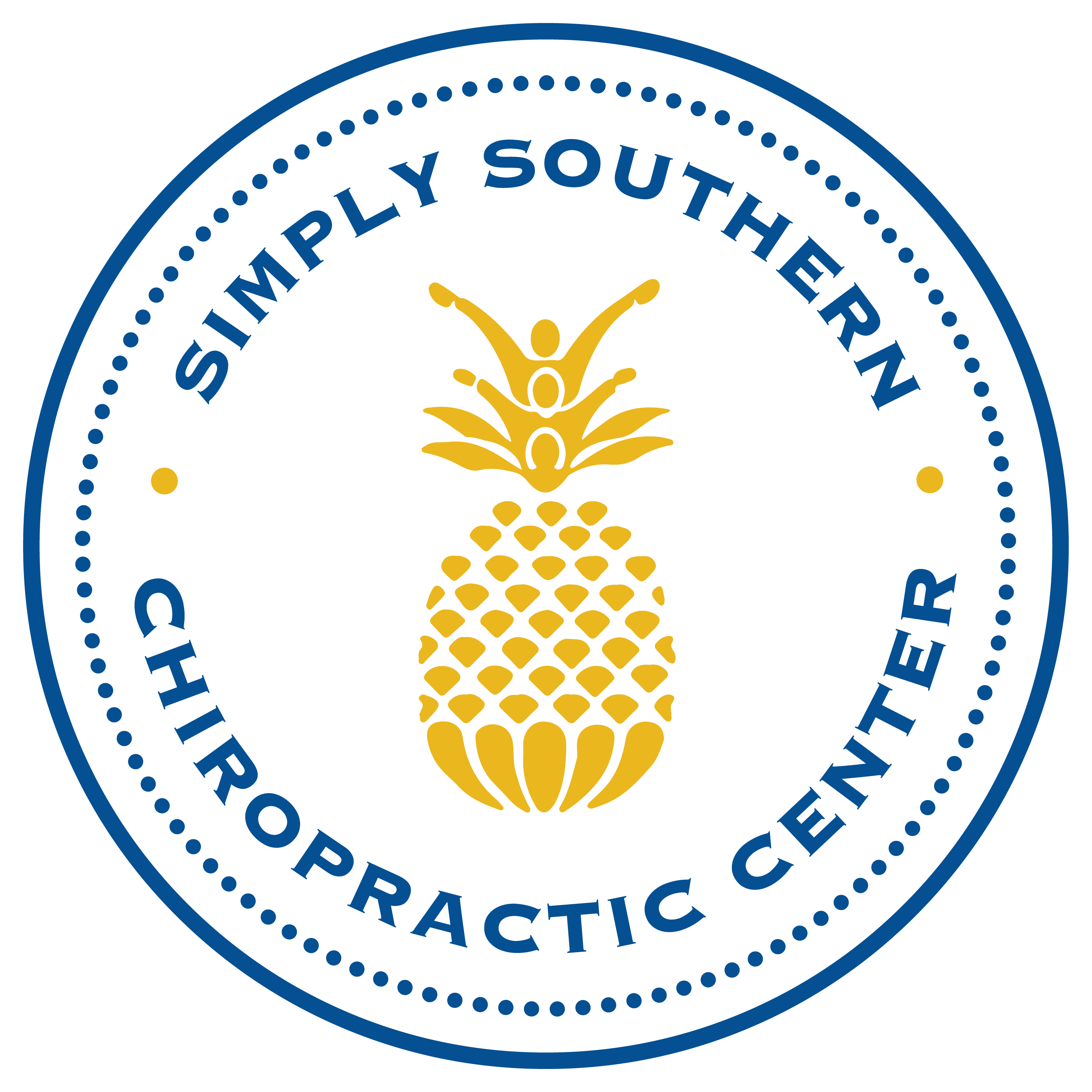Benefits of Electrical Muscle Stimulation

After an injury, the road to recovery can be long and challenging. Patients are often eager to start feeling better immediately in order to get back to their favorite activities.
In order to help our patients reach their rehabilitation goals as soon as possible, we utilize a method known as electrical muscle stimulation.
What is Electrical Muscle Stimulation (EMS)?
Electrical muscle stimulation (EMS), also referred to as “stim”, is a targeted rehabilitation treatment used in combination with manual therapy. It supports the recovery process by stimulating specific muscles to prevent atrophy and build strength. EMS is applied to help treat pain or recover muscle strength following an injury, surgery or spasm
How Does It Work?
When used to maintain or regain muscle strength, electrical muscle stimulation delivers mild electrical pulses to the targeted muscle group. Chiropractors attach several electrodes, that are small adhesive pads, to the patient’s skin in order to stimulate muscle contraction. Streams of electric pulses are transferred through the wires attached to the EMS machine. For muscle stimulation, the pulse will reach the muscle and make them contract.
Chiropractors use electrodes to aim the electrical pulses at particular areas of the nervous system to block the transmission of pain signals being sent toward the spine and brain. The stimulation also works to boost the body’s production of endorphins. Fun fact: the endorphins are natural pain relievers for the body.
The Advantages of Electrical Muscle Stimulation
Physiotherapy
Electrical muscle stimulation can be used on physiotherapy patients to help reactivate muscle response while recovering from a surgery or injury. For example, EMS has been shown to effectively strengthen quadriceps after ACL reconstruction surgery. EMS can enhance engagement in therapeutic activities and address weaknesses.
Rehabilitation
Electrical muscle stimulation has also been shown to be an effective way to increase mobility and strength for patients recovering from a serious injury. The stimulation helps retrain muscles to respond to the body’s natural signals and build strength by causing repeated contractions. This is beneficial when patients are working to relearn basic motor functions.
Long-Term Care
Patients who have suffered a spinal cord injury or paralysis are able to keep muscles active. Additionally, therapists utilize EMS to help critically ill patients exercise and maintain muscle tone which would otherwise decrease due to lack of use.
Pain Management
This type of therapy utilizes different electrical pulses to directly target nerves in the body. By blocking the activity of pain receptors sending signals of discomfort to the brain, this drug-free therapy can provide effective pain relief. It can be useful in treating chronic pain.
Conditions Treated with Electrical Muscle Stimulation
In the field of chiropractic and rehabilitation, electrical muscle stimulation can be used to treat the following conditions:
- Chronic back pain
- Post-surgical pain
- Joint pain
- Arthritis
- Fibromyalgia
- Muscle injury from trauma, disease, or surgery
- Nerve inflammation
- Tendonitis
- Bursitis
- Stroke
- Spinal cord injury
- Muscle weakness or atrophy
- Loss of motor skills
- Dysphagia, or trouble swallowing
What Patients Should Expect with Electrical Muscle Stimulation
You may be a little weary to undergo EMS as part of your physiotherapy regimen. We can assure you that it sounds much more uncomfortable than it is. Therapy generally lasts 9-15 minutes. During this time, you will likely feel a tingling sensation and experience a repetitive tensing in the muscle during therapy. EMS should never be painful.
During your appointment, our chiropractors will place small electrodes on the skin. The sticky electrode pads are situated around the area which will be targeted with stimulation. Wires connect the pads to the EMS device which delivers the electrical current required.
Muscle Therapy
Our chiropractors will carefully control the intensity of the electrical current. Typically, treatments begin with a low level of stimulation and gradually increase the setting. In response, the targeted muscles will contract with increasing force. Our chiropractors may ask you to make a particular motion as the pulses are being delivered.
Nerve Therapy
When EMS is used to relieve pain or muscle spasms, the patient is encouraged to relax during the therapy session.
Before scheduling your chiropractic session, you should consult with your primary physician to discuss any pain or discomfort. Electrical muscle stimulation is not advised for patients who are pregnant, have pacemakers, implanted heart devices or certain types of skin sensitivities and diseases.
Please feel free to contact us. We can walk you through the entire process, from beginning to end.
“Benefits of Electric Muscle Stimulation – OrthoArizona: Complete Musculoskeletal Care.” OrthoArizona, 20 July 2020, orthoarizona.org/blog/benefits-of-electric-muscle-stimulation.
Roland, James. “E-Stim: What It Is, How It Works, and Why It May Help You.” Healthline, Healthline Media, 29 July 2019, www.healthline.com/health/pain-relief/e-stim.
Vandergriendt , Carly. “What’s the Difference Between TENS and EMS Units?” Healthline, 15 Jan. 2021, www.healthline.com/health/tens-vs-ems#bottom-line.
